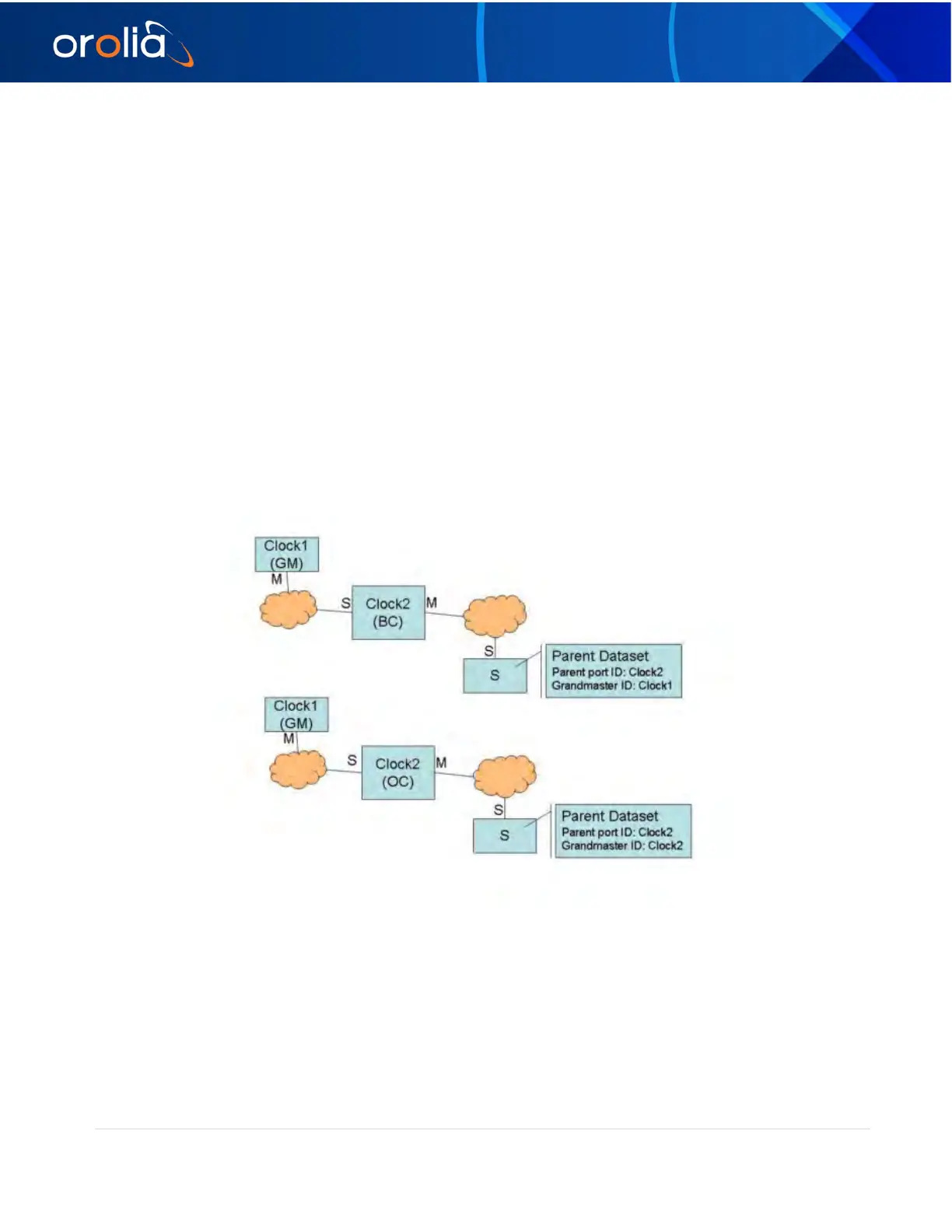orolia.com EdgeSync Manual rev 1 | 55
The Gateway Clock (GC) can be considered as an Ordinary Clock (OC) with two ports, with one port
configured as a master and the other port configured as a slave.
Another capability of the EdgeSync is for both ports to be configured as master ports. In that
configuration, each port would have its own IP address and be associated with different subnets.
However, both ports would have the same PTP Clock Identity. With each port connected to different
subnets, the ports can serve as GM for the slaves on the two different subnets. The slaves on the two
separate subnets would then use the BMCA to select the best GM from which to recover the PTP time
messages.
The Boundary Clock
The Boundary Clock (BC) has one port defined as a master port and the second port as a slave port
receiving PTP messages from an external Grand Master (GM) Clock. The PTP Clock Webpage is used
to set the EdgeSync clock as a boundary clock, described in PTP :: Clock
Section of this User Guide.
The following figure illustrates the difference between a Gateway Clock and a Boundary Clock. The
slaves connected to a Gateway Clock will only recognize the Gateway Clock as a Grand Master and not
any other upstream masters. In the following figure, the slaves connected to the Gateway Clock will not
recognize the Clock 1(GM). The slaves that are connected to the Boundary Clock will recognize Clock
1(GM) as the Grand Master.
Figure 30 Gateway Clock (GC) vs. Boundary Clock (BC)
